This thesis presents the groundwork for a proposed CO2 sequestration project in Osage County, Oklahoma. It describes the flow simulation of the CO2 plume in the saline aquifer of the Arbuckle Group, a dolomite formation, proposed as a potential large-scale storage reservoir for CO2 in the state of Oklahoma. Geological storage of CO2 is one of the most potent tools today in reducing atmospheric CO2 and battling climate change. With governments around the world putting policies in place to significantly reduce carbon emissions within the next two decades, there is an expectation for more CO2 sequestration projects across the world.
This study used Milad et al.’s (2022) geological model that was built by integrating core data and well logs in estimating stratigraphic and petrophysical properties of the formation. A black-oil model with 1 injection well was successfully built to simulate injection for 30 years. Local grid refinement was used around the injection well to improve the level of detail and accuracy of the model in this region. The formation was divided into 10 layers and the injection well was perforated in the bottom four (4) layers of the structure. These layers were selected based on the depth of existing injection wells in the region, some of which are intended to be remodeled for use should the project kick-off. The layers also had a good permeability distribution thus making it suitable for large-scale CO2 injection at low pressure. Pressure management is important in CO2 storage because adding large volumes of CO2 to a reservoir without any fluid removal mechanism runs the risk of potentially rupturing cap-rock seals or generating flow through faults that would otherwise restrict flow. The pressure buildup and CO2 plume evolution in the 50 years post-injection was also observed, recorded, and analyzed.
The analytical model for predicting pressure buildup developed by Mathias et al. (2011b) was also explored to determine the extent of its applicability. In carrying this out, a single well cylindrical CMG model with specified values of the reservoir properties was built to meet all the assumptions made in the analytical method. The reservoir pore volume was then altered by changing the radial extent of the reservoir to see how well the analytical model performed when compared to a corresponding CMG GEMS model at different injection/pore volume ratios.
After 30 years of injection, the CO2 plume covered an area of 5827 acres of the 1.2 million acres of the Osage Arbuckle, (less than 0.5%). The dominant CO2 trapping mechanism was structural trapping with increased residual trapping at the end of injection. Sensitivity analysis revealed that injection had to be carried out with the maximum bottom hole pressure at least 80% of the reservoir fracture pressure and no less than 96 mD permeability to meet the required injection of 50 million metric tons of CO2. It was observed that the analytical pressure buildup model performed well when the ratio of injected reservoir volume to the pore volume was less than 0.1%. Beyond this number, the slope of the pressure buildup curve calculated analytically deviated from the slope of the corresponding CMG GEMS model. With the aid of a correction factor applied to the time variable, this variation could be corrected.
This thesis provides a reference that would be useful during potential deployment of CO2 injection in the Arbuckle Group while providing more insight into the use of an analytical model in predicting pressure buildup. It also provides slope correcting factors that could be used in applying the analytical model when the ratio of injected reservoir volume to pore volume in this system exceeds 0.1%. This study could assist decision making during field development in Arbuckle as we work to ensure a sustainable future.
SIMULATING CO2 SEQUESTRATION IN THE ARBUCKLE GROUP OF OKLAHOMA AND EXPLORING THE EXTENT OF APPLICABILITY OF AN ANALYTICAL MODEL IN PREDICTING PRESSURE BUILDUP
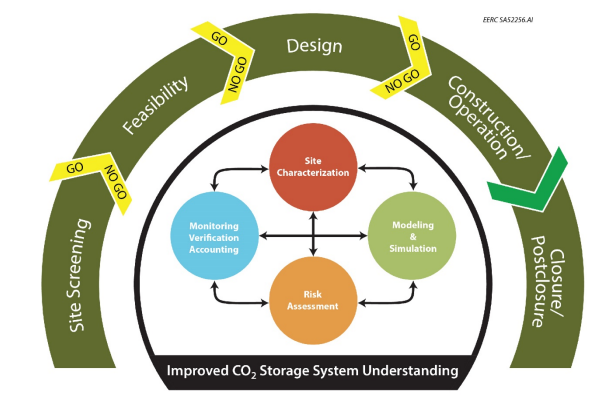
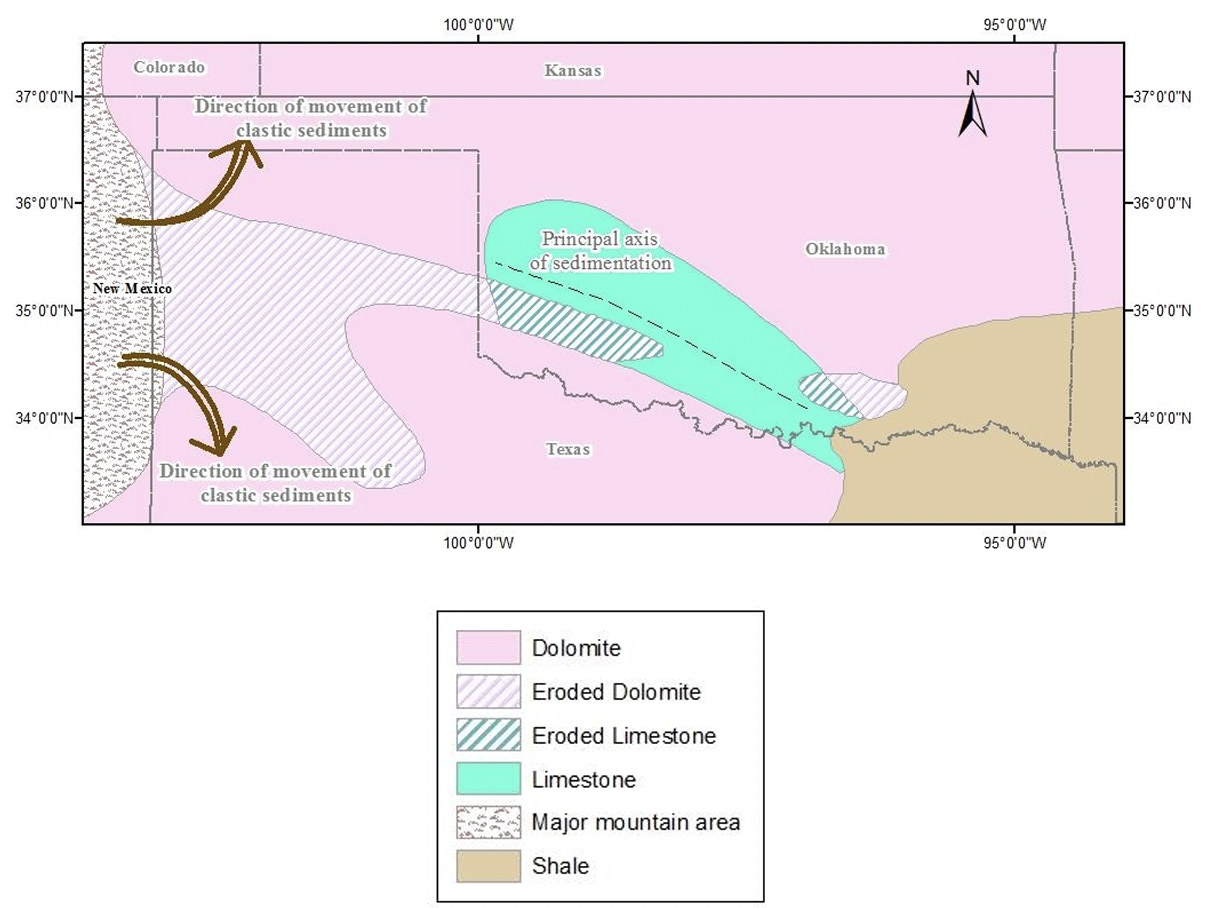
Figure 4: Rock Types of Late Cambrian to Early Ordovician age (Perilla-Castillo, 2017; Modified from Johnson, 2008)
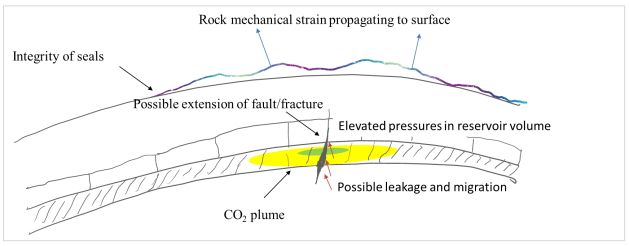
Figure 9: Geo-mechanical risks associated with Geological Carbon Storage in deep sedimentary rock rocks. ((Ochie, 2022); Modified from (Ringrose, et al., 2013)
| GEOCHEMICAL REACTIONS |
| Aqueous Chemical Equilibrium Reactions |
| Mineral Dissolution/Precipitation Reactions |
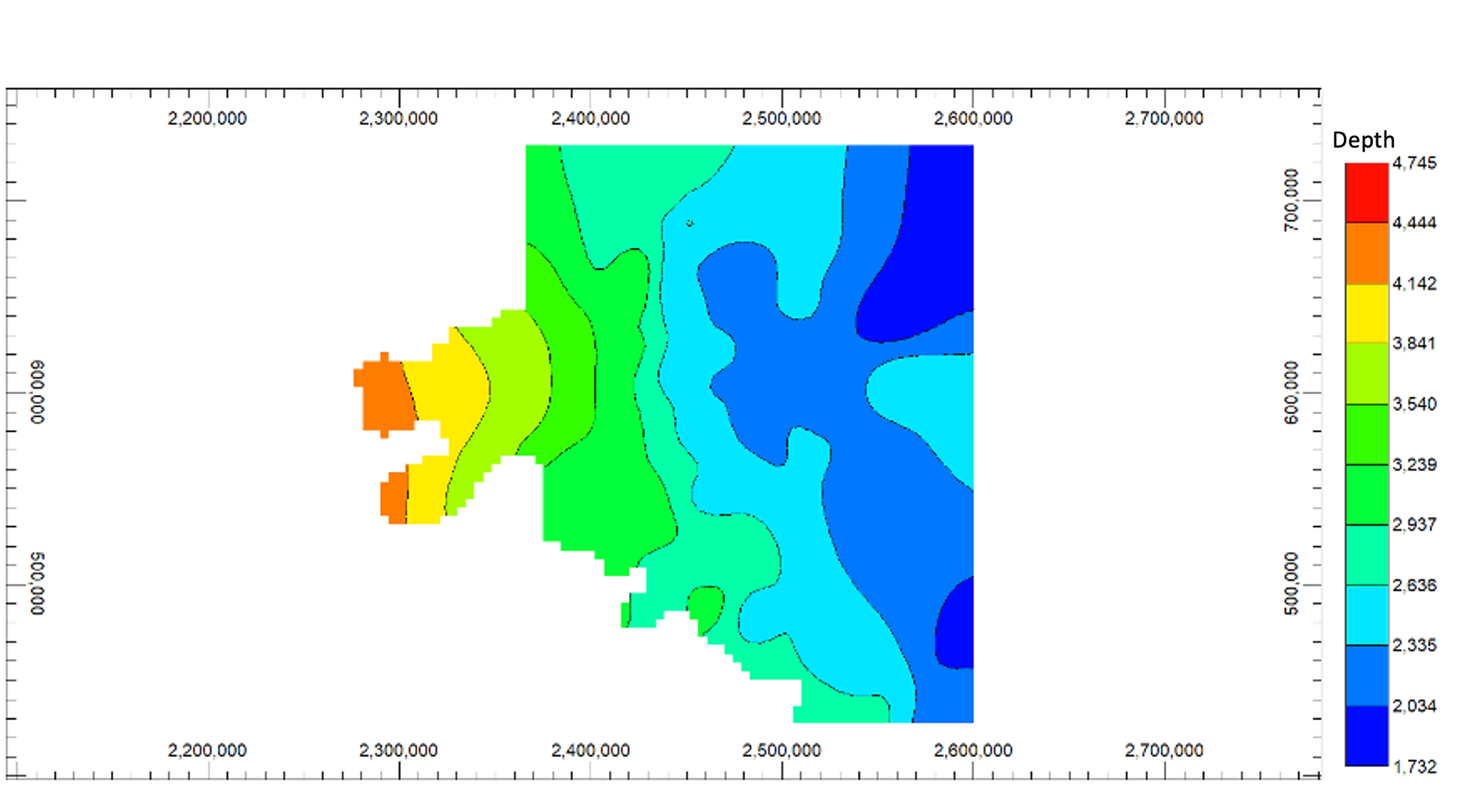
Figure 13: Osage Arbuckle Contour Map (Grid Tops/Depth)
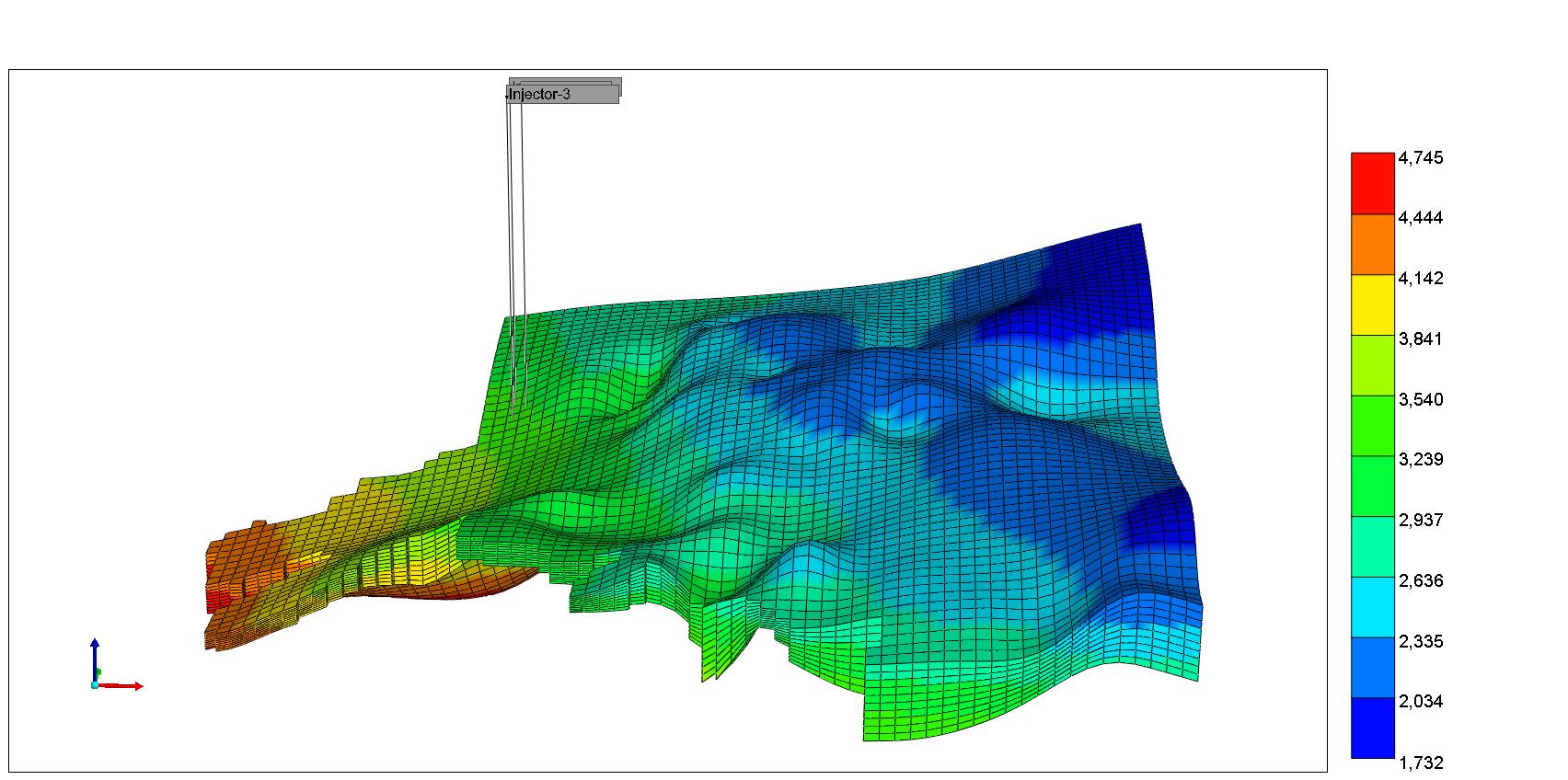
Depth
Figure 14: Grid Model, Osage Reservation Arbuckle.
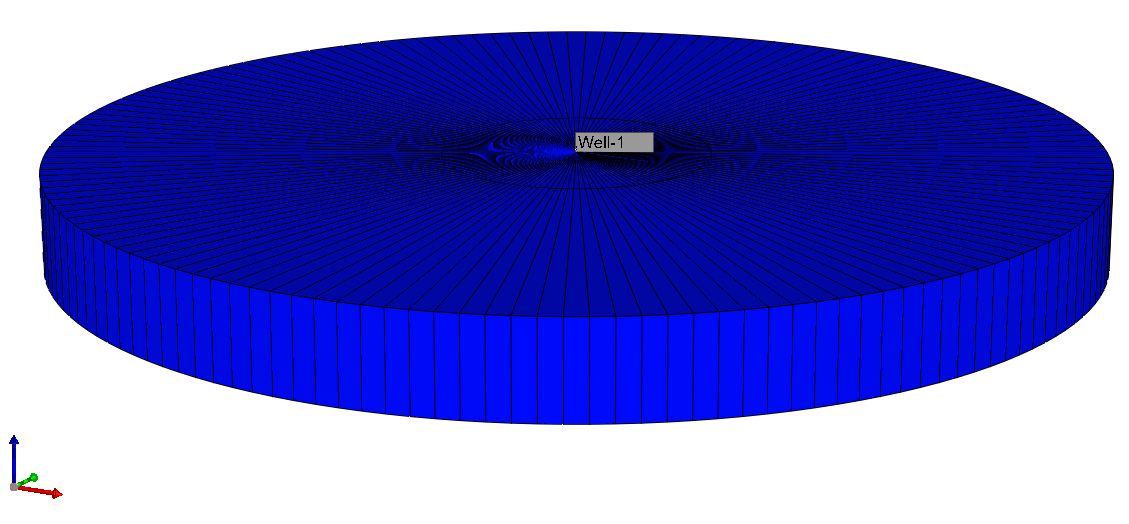
Figure 22: Cylindrical Osage Grid Model to match assumptions from Mathias et al. (2022) analytical solution.
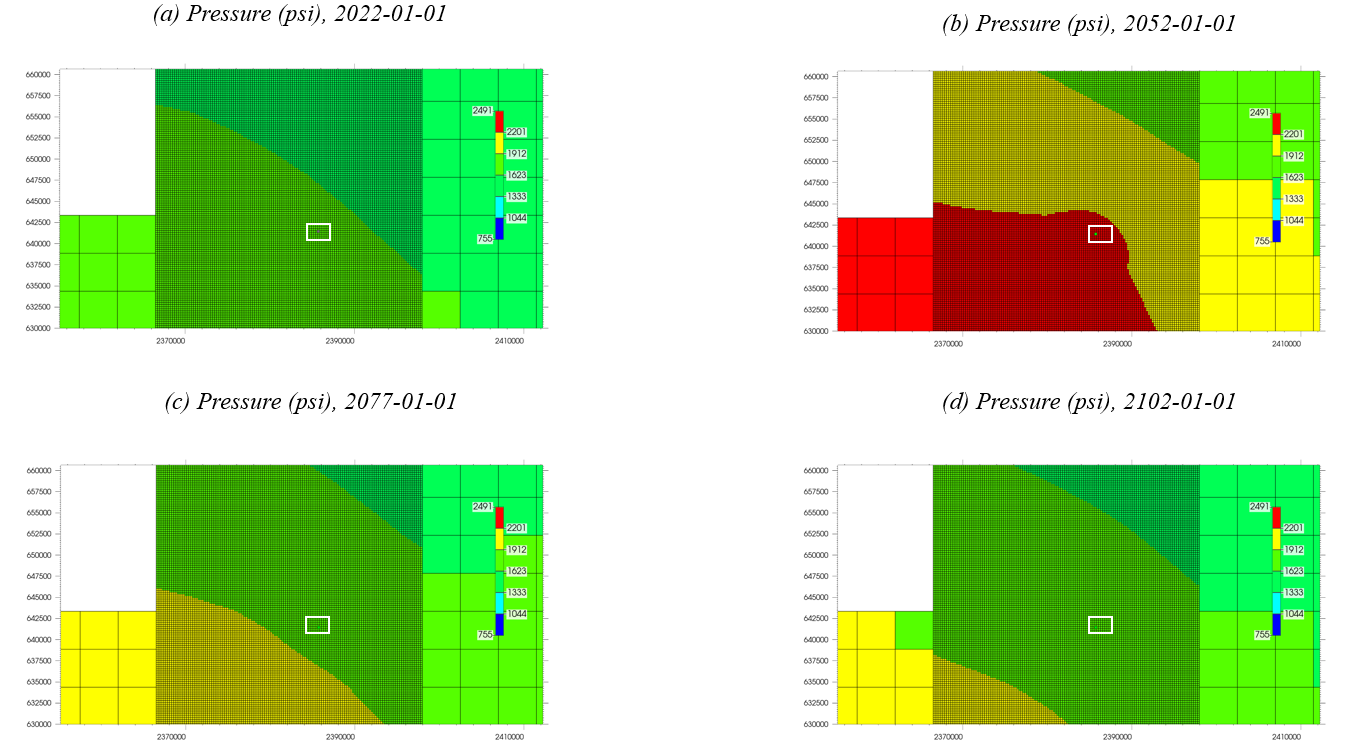
Figure 39: Pressure evolution in Arbuckle with CO2 injection using local grid refinement around the injection well. (Blue box indicates North Burbank Unit injection region). Red indicates high pressure; blue indicates low pressure and green represents moderate pressure.
